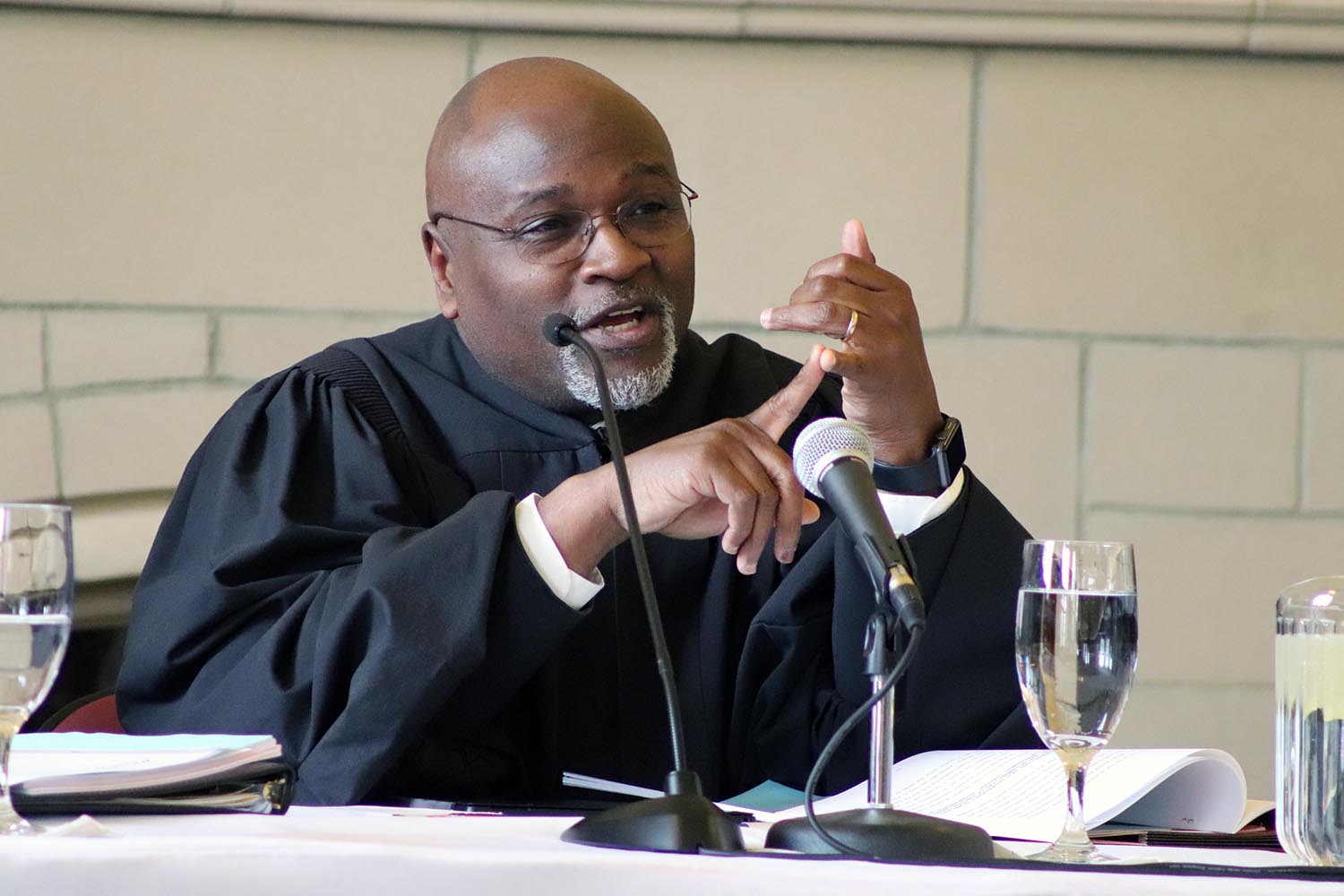UConn Law students got an intimate look at how Connecticut’s highest court conducts business when the Connecticut Supreme Court heard two cases at the UConn School of Law in Hartford on February 27, 2020.
The seven-justice panel, sitting en banc before a large crowd in the Reading Room of William F. Starr Hall, consisted of UConn Law alumni Gregory D’Auria ’88, Andrew McDonald ’91 and Richard Palmer ’77, with Steven Ecker, Maria Kahn, Raheem Mullins and Chief Justice Richard Robinson.
Before introducing the first case, Robinson spoke directly to the room, and thanked the law school for hosting the court. “It is an incredible opportunity to be able to do this in front of law students who will become the attorneys in these courtrooms,” Robinson said.
The two cases involved distinct aspects of the law. The first, a criminal appeal challenging the constitutionality of a drug-sniffing dog search, asked the justices to define the boundaries of Fourth Amendment rights. The second, a civil appeal, asked the court to dig deep into workers’ compensation jurisprudence to appropriately compensate an employee for a heart transplant attributed to job stress.
After each oral argument ended, the justices left the room and students had the opportunity to question the opposing attorneys. Paige Forcier ’20 said she liked that the different cases demonstrated diverse lawyering styles.
“Being able to observe any court proceeding is a great opportunity for students to learn about oral argument, appellate advocacy and individual attorney style,” she said. “It is useful to see what type of advocacy works and what doesn’t work, especially as rising lawyers trying to develop our own styles.”
After the second argument ended, Robinson appealed to the students in the room to apply for judicial clerkships. His current clerk, as well as his clerk for next year, are from UConn Law, he said.
Robinson also made a stirring tribute to UConn Law Dean Timothy Fisher, whose tenure as dean ends this summer. Fisher, he said, will be remembered for his commitment to public service, his dedication to the law school and “a smile that would melt anyone.”
The session marked the state Supreme Court’s sixth visit to the UConn Law campus as part of its “On Circuit” educational program. The law school has also hosted sessions of the Connecticut Appellate Court and the U.S. Court of Appeals for the Second Circuit.



